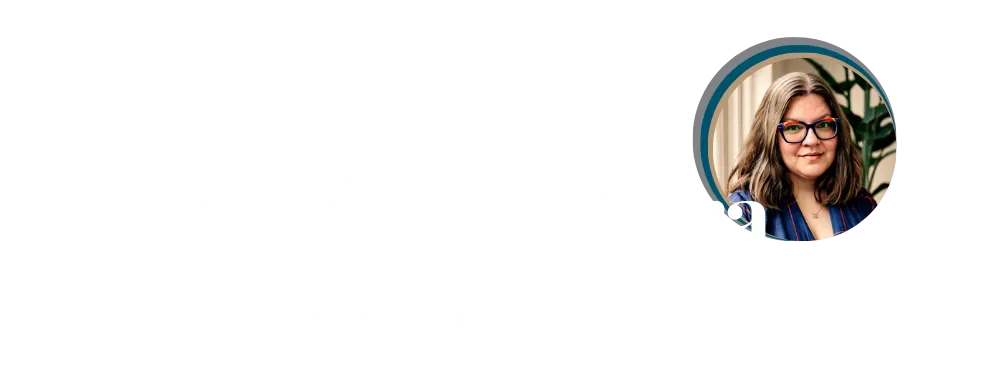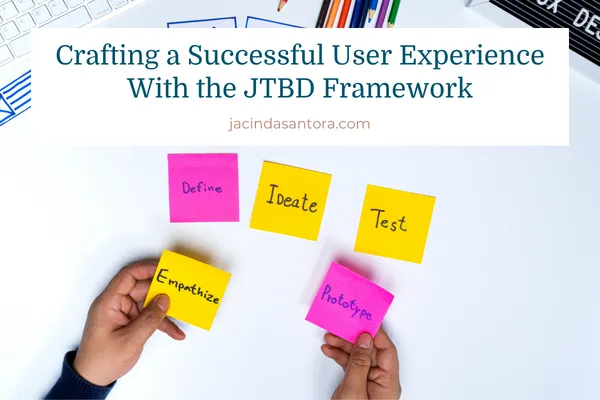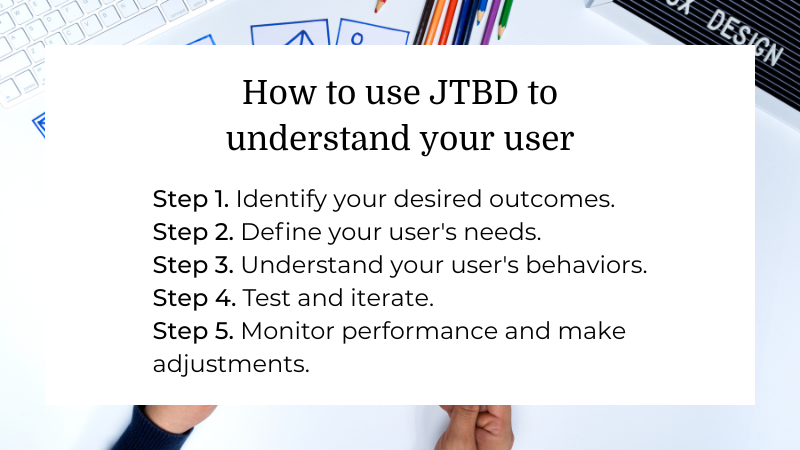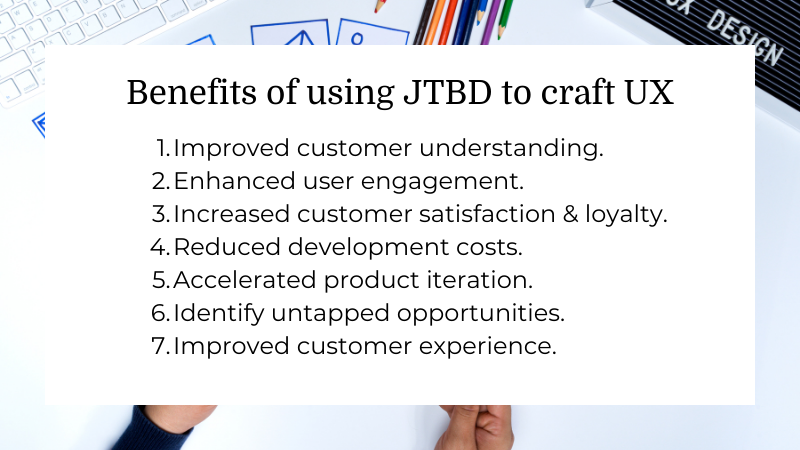



Crafting a Successful User Experience With the JTBD Framework
User experience (UX) is a term you likely hear often, but what does it really mean? UX design is “the process of enhancing user satisfaction with a product by improving the usability, accessibility, and pleasure provided in the interaction with the product.” In other words, UX design is all about making sure your users have a positive experience when using your product.
Creating a great UX starts with understanding your users and their needs. This is where the Jobs-to-be-Done (JTBD) framework comes in. JTBD is a powerful tool that can help you figure out what your users are trying to accomplish and how you can help them succeed. In this blog post, I’ll show you how to use JTBD to craft a successful user experience for your business.

What is the JTBD Framework, and how can it help you create a successful user experience for your product or service?
JTBD has quickly become the gold standard for successful user experiences. By using this powerful framework, developers and designers are better equipped to create products and services that meet the needs of their users.
JTBD helps to eliminate guesswork, providing a roadmap for UX teams to gain deeper insights into the motivations and desires of users.
This method enables designers to hone in on the desired outcomes of their customers and provide an experience that not only meets but exceeds expectations. If you’re looking to create a truly great user experience, using JTBD is an essential approach.
Related Content: The Jobs-to-be-Done Framework: A Revolutionary Approach to Business Growth
How to use JTBD to understand your users' needs and wants.

Understanding your users' needs and wants with JTBD can open up new possibilities for product growth. The framework allows you to understand how users interact with products by surfacing what functional and emotional jobs they're trying to do.
Unlike traditional UX research methods, this approach focuses on how people use products to make progress in their lives. With JTBD, you can construct a clearer picture of how users are engaging with your product and uncover unwritten requirements and opportunities.
Overall, the framework helps build an effective user experience for those using your products or services, leading to greater customer satisfaction and loyalty.
Here’s a step-by-step guide to using the JTBD Framework:
Step 1: Identify Your Desired Outcomes
Ask yourself what goals and objectives you want to accomplish with your product or service.
Consider the needs of your target audience and create a list of outcomes that you hope to achieve through user experience design.
Step 2: Define Your Users’ Needs
Once you have identified the desired outcomes for your product or service, it’s time to define your users’ needs.
Ask yourself, who are the people using your product or service? What are their motivations and desires? What jobs do they need to get done in order to make progress in their life?
Create a customer profile that outlines their demographic information, interests, and goals.
Step 3: Understand Your Users' Behaviors
Next, it’s important to understand how users interact with your product or service.
Use tools such as customer surveys, focus groups, interviews, and website analytics to gain insights into user behavior. Ask questions about when users interact with your product or service, why they use it, where they use it, and how long they use it.
Look at patterns in user behavior that emerge from this data so that you can identify areas of success as well as opportunities for improvement.
Step 4: Test & Iterate
Once you have an understanding of how users interact with your product or service, it’s time to test and iterate based on the insights that were gathered in steps 2 & 3.
Test different variations of features and user interfaces to see which ones work best for achieving desired outcomes. Make sure these tests are carried out on representative samples so that results will be accurate.
Then, analyze feedback from these tests and iterate accordingly before rolling out updates to all customers.
Step 5: Monitor Performance & Adjustments
Finally, monitor performance regularly after new updates have been rolled out.
This can be done through tracking metrics such as usage frequency, time spent on the site/app, etc., as well as by gathering qualitative feedback from users about their experience with the new changes made.
If needed, more adjustments can be made either through further testing or making small tweaks to existing features until desired outcomes are achieved.
Benefits of using the JTBD Framework to craft a user experience that meets your users' needs.

The benefits of using JTBD for UX design truly cannot be overstated. Here are just some of those benefits:
Improved customer understanding: Gain a deeper understanding of your target audience and their needs to better serve them with an optimized user experience.
Enhanced user engagement: Design an experience that meets the needs of customers and wows them by aligning design decisions with users' desired outcomes.
Increased customer satisfaction and loyalty: By providing a tailored experience that is suited to individual customers, you can foster greater satisfaction and loyalty among your user base.
Reduced development costs: Utilizing JTBD in the design process helps cut down on development time required as it allows for more targeted feature creation based on data instead of relying on guesswork or assumptions about what might work best for users.
Accelerated product iteration: Testing different features quickly helps accelerate product iteration cycles so changes can be implemented faster, which leads to increased efficiency overall.
Identify untapped opportunities: Unearth hidden opportunities by analyzing user behavior patterns which could lead to further optimization possibilities.
Improved customer experience: Finally, JTBD can lead to a more streamlined and intuitive user experience which will ultimately improve the overall quality of your product or service.
By taking the time to understand how our users are engaging with our product, understanding their motivations and thought processes, and making design decisions that align with the jobs they’re looking to complete, we can craft an experience that not only meets their needs but also wows them.
Developing a deeper understanding of our user base is a key step in creating a successful user experience that encourages increased engagement with our product.
How to get started with the JTBD Framework: Tips and tricks for success
The JTBD framework is an incredible way to get a deep understanding of your customer and their needs. With JTBD, you can better understand the motivations for why customers are buying something or why they're coming to you for help. To start off on the right foot with JTBD, here are some tips and tricks for success:
Engage with your stakeholders, listen to what they have to say, and understand their goals.
Identify which customer jobs will be meaningful to them, and figure out specific JTBD statements that summarize these jobs.
Validate these JTBD statements by getting feedback from customers.
Analyze this information, draw insights, and come up with actionable ways to improve your products and services.
By following these tips and tricks (which are basically just remembering actually to follow the JTBD process), you'll be well on your way to using JTBD like an expert.
Create a Successful UX With JTBD
The JTBD Framework is a powerful tool that can help you create an amazing user experience for your product or service. It's easy to get started with and can be used in any industry — not just SaaS!
If you're looking for tips on how to use this framework to grow your business, let me know. I'm excited to chat and see how I can help you succeed.
Nothing in on this page or any other site or communication by or from me is a promise of earnings or guarantee of results.
